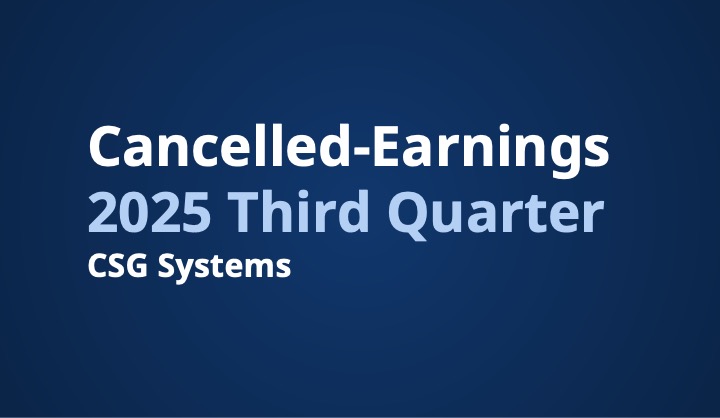Key takeaways
- Some telcos lose 15-20% of partner revenue through billing errors and settlement delays
- Smart financial management can eliminate revenue leaks while providing real-time margin visibility
- Integrated quote-to-cash processes help ensure profitability from bid to bill in multi-partner models
Partnership revenue is make-or-break for telecom operators. You need partners to survive. But most operators bleed millions through broken financial systems.
The numbers tell the story. Global telecommunications generated $1.14 trillion in service revenue in 2023. Growth projections show only 2.9% annual increases through 2028. Every partnership dollar matters.
Here’s the problem: Some newly acquired telecom customers end up costing more than they bring in. When you repeatedly forecast negative value across complex partner ecosystems with IoT providers, content partners and wholesale agreements, these losses become devastating.
The solution? Move from reactive revenue management to financial management by design. Build partner ecosystems where profitability is baked into every transaction from day one.
Why partnerships are essential for Telecom growth
Between 2023 and 2028, revenue from fixed broadband and mobile subscriptions are expected to grow at only 3.8% and 4.3%, respectively.
This modest growth trajectory is forcing operators to revisit an array of business dynamics, partnership arrangements among them.
Telecom operators have unique advantages in partnership ecosystems. You know your markets intimately. You make decisions quickly. You build responsive relationships with partners.
These advantages diminish when partnership economics leak revenue.
The hidden costs of partnerships
Most telecom companies think they’re capturing partnership value. They may be bleeding millions through invisible leaks in their financial systems.
Here’s what partnership can cost:
System errors
Consider a telco that launches IoT partnerships with three device manufacturers. Each manufacturer uses different data formats and billing cycles. The telecom’s legacy billing system can handle standard monthly mobile bills, but struggles with usage-based IoT charges that fluctuate throughout the month. Small discrepancies in data processing compound across thousands of devices, creating revenue leaks that go unnoticed for months.
Manual processing overhead
Picture a mid-sized telecom’s finance team managing settlement calculations for content partnerships. Every month, they receive usage reports from Netflix, Spotify and gaming partners in different formats. Finance staff spend days reconciling data in spreadsheets, calculating revenue shares and generating partner payments. Each new content partnership adds another layer of manual work that doesn’t scale.
Relational strain
Imagine a telecom company that consistently pays partners late due to manual settlement processes. A key content partner grows frustrated with delayed payments and begins exploring agreements with competitors who offer faster, more accurate settlements. The relationship deteriorates not because of service quality, but because of operational inefficiencies.
Opportunity cost of margin blindness
Think about a telco offering bundled services with multiple partners. Without real-time margin visibility, they can’t tell which partnerships generate profit and which create losses. They may invest heavily in marketing a partnership bundle that looks successful in gross revenue but actually loses money when all costs are properly allocated.
The pattern is clear: partnership complexity amplifies financial management problems that were manageable with simple customer relationships. What starts as minor billing inconsistencies becomes major revenue hemorrhaging in multi-party ecosystems.
Pillars of profitable partner management
Financial management by design may look different than traditional partnership models. Successful telcos architect their partnership ecosystems around three core financial management pillars.
Pillar 1: Real-time margin visibility
Modern partnership agreements should provide visibility into deal-level profitability. Market conditions, usage patterns and cost structures evolve all the time. Traditional monthly or quarterly financial reporting creates dangerous blind spots.
Real-time margin visibility requires data processing capabilities that extend far beyond traditional billing systems. Multiple data points — including usage volumes, service tiers, geographical distribution and time-of-day variations — must be correlated with dynamic cost structures to calculate true profitability.
Multi-dimensional cost allocation
Partnership profitability calculations need accurate cost allocation that cover the true economics of service delivery. For telecoms, this means data around network infrastructure costs, customer acquisition expenses, support overhead and partner management resources across multiple revenue streams. Each stream has different usage patterns and margin profiles.
Real-time margin visibility systems automatically distribute costs based on actual resource consumption rather than static allocation formulas. When a content partnership drives increased bandwidth utilization during peak hours, the system immediately adjusts margin calculations to reflect the incremental network costs.
Pillar 2: Automated revenue assurance
Automated revenue assurance insulates against the risk of human error in intricate financial processes. Billing errors are a common source of revenue leaks in the telecom sector.
Here are some additional revenue leak sources in partner ecosystems to look out for:
- Data processing errors: Revenue leakage from dropped data or incorrectly applied exemption rules
- Rating and charging mistakes: Miscalculated usage charges or incorrect rate applications to partner services
- Settlement timing issues: Manual reconciliation delays causing cash flow problems and dispute escalation
- Contract version control: Outdated pricing terms applied to new transactions due to system synchronization failures
- Multi-party billing problems: Revenue sharing calculation errors when multiple partners participate in single transactions
Automated revenue assurance systems monitor every transaction in real-time. These systems compare actual billing against expected outcomes based on contract terms, usage patterns and pricing rules. Machine learning algorithms identify anomalies that human analysts would miss.
Integrated settlement engines
Revenue sharing agreements can incorporate usage tiers, performance bonuses, geographic differentials and seasonal adjustments. All require precise calculation and timely execution. Advanced solutions enable faster dispute resolution through automated reconciliation.
Pillar 3: Integrated quote-to-cash management
The quote-to-cash process is a critical pathway where partnership revenue is won or lost. Disconnected systems create multiple handoff points where errors, delays and miscommunications can derail profitable partnerships before they begin generating revenue.
Integrated management eliminates these vulnerability points by creating seamless data flow from initial partner quotes through final revenue recognition.
Multi-jurisdiction support and complex invoicing
Multi-jurisdiction taxation presents particular challenges when partner services cross geographic boundaries. A single IoT deployment might involve partners in three different countries, each with distinct tax requirements, currency regulations and financial reporting standards.
Integrated quote-to-cash systems automatically manage hierarchical invoicing structures that separate regulatory compliance from partnership economics.
The B2B2X partnership model
B2B2X refers to business models where two or more companies partner to deliver combined offerings to end customers. The “X” represents any customer type—consumers (B2B2C), businesses (B2B2B) or other entities. Instead of selling standalone connectivity, telecoms bundle their services with partners’ offerings to create integrated experiences.
How B2B2X works
The telecom acts as either the primary relationship owner or the enabling infrastructure provider. Partners contribute complementary services—content, applications, devices or specialized expertise. Revenue flows through negotiated sharing models based on each partner’s contribution, customer acquisition or usage metrics.
Why B2B2X drives higher revenue
Simply upselling traditional portfolios with 5G speed may increase ARPUs by just 3 to 6 percent. But creating highly personalized offers, selling “experiences” and pursuing B2B2C partnerships could triple or even quadruple these gains.
Voice, text and data services have become commoditized. Customers want connected and immersive experiences across all networks, devices and channels—and they’re willing to pay for them.
Three B2B2X scenarios for Telecoms
Let’s paint a picture of profitable B2B2X partnerships.
Scenario 1: Smart city infrastructure partnerships
A telco partners with traffic management software companies, environmental monitoring firms and public safety providers to offer a comprehensive smart city solution to municipal governments. The telco provides 5G connectivity and edge computing infrastructure. Partners contribute specialized sensors, AI analytics and application management.
Revenue sharing depends on service usage: the telco earns from connectivity and infrastructure, traffic companies earn from optimization software licenses, environmental firms earn from data analytics subscriptions and safety providers earn per-incident response fees. The telco’s billing system must track usage across multiple service categories and distribute payments to partners monthly.
Scenario 2: Connected healthcare ecosystem
A telco partners with medical device manufacturers, telehealth platforms and health data analytics companies to serve healthcare providers. Patients use connected devices that transmit health data through the telecom’s network to cloud-based platforms where AI analyzes patterns and alerts healthcare providers to potential issues.
The revenue model combines recurring connectivity fees, per-device management charges, data processing fees and outcome-based bonuses when the system successfully predicts health events. Each partner earns based on their specific contribution: device companies earn hardware fees, telehealth platforms earn per-consultation fees and analytics firms earn per-patient monitoring fees.
Scenario 3: Industrial IoT manufacturing solutions
A telco collaborates with industrial equipment manufacturers, predictive maintenance software providers and system integrators to serve manufacturing companies. Connected sensors on production equipment transmit performance data through private 5G networks to cloud analytics platforms that predict equipment failures and optimize production schedules.
Revenue flows from multiple streams: connectivity fees for network access, equipment monitoring charges, predictive analytics subscriptions and performance improvement bonuses. The telco earns from network services and edge computing, equipment manufacturers earn from sensor hardware, software companies earn from analytics platforms and integrators earn from installation and support services.
Managing the finances of B2B2X partnerships
Each scenario requires real-time tracking of partner contributions, dynamic revenue calculation based on actual usage, automated settlement processing across multiple currencies and accounting systems and dispute resolution mechanisms when partners disagree on revenue allocations.
Traditional telecom billing systems handle straightforward monthly customer bills. B2B2X partnerships demand financial platforms that manage multi-dimensional rating, real-time margin analysis and automated partner settlements without manual intervention.
Technology to build profitable partnerships
Cloud-native architectures provide the elastic infrastructure that supports partnership growth. They optimize costs by scaling based on actual usage, not projected capacity.
CSG’s cloud-native platform supports dynamic B2B2X offers. CSG customers can reduce infrastructure costs and overhead expenses through cloud deployment. Telecom companies with tight budgets can reinvest these savings into partnership development and market expansion.
Partner ecosystems: The financial management roadmap
The right partner management solution should be brought to life through financial-first implementation. A process like that will prioritize immediate revenue protection while systematically building advanced capabilities.
Phase 1: Financial assessment
Most telcos begin partnership financial transformation while actively experiencing revenue challenges through existing relationships. The first tasks must focus on identifying and addressing the largest revenue issues. This assessment approach differs from traditional technology rollouts that prioritize feature completeness over financial impact.
Revenue assessment
The initial assessment targets the highest-value, lowest-difficulty revenue streams where quick wins generate immediate return on investment.
Focus areas include:
- High-volume settlement errors: Automated identification of recurring billing discrepancies in top partner relationships
- Currency conversion losses: Real-time detection of exchange rate arbitrage opportunities being lost to manual processes
- Contract version alignment: Immediate reconciliation of pricing terms across all active agreements
- Dispute resolution efficiency: Fast-track settlement of significant disputes that are straining partner relationships
Margin visibility
Establishing accurate baseline margin calculations may prove more challenging than anticipated. Most telcos discover their cost allocation methods need fundamental refinement. True partnership profitability analysis requires disaggregating shared infrastructure costs, customer acquisition expenses and support overhead in ways that traditional financial systems may not have supported.
Prioritization
Start with partnerships generating the highest transaction volumes. High-volume partnerships provide the best testing ground for automated systems while reducing errors.
Analyze specific error categories that create the most partner friction:
- Usage data processing: Reduction of manual CDR interpretation challenges that cause revenue leakage
- Multi-tier rating: Automated application of pricing rules that previously required spreadsheet calculations
- Revenue sharing distribution: Real-time calculation and validation of partner payment amounts
- Exception handling: Intelligent routing of billing anomalies to appropriate resolution teams
Phase 2: Mapping and streamlining processes
This phase addresses the fundamental scalability considerations. The goal is to reduce the administrative bottlenecks that make partnership development a resource-intensive process rather than a scalable growth engine.
Onboarding
What is your average onboarding timeline? What factors impact it? Telcos may lose partnership opportunities because their onboarding processes require weeks or months while competitors activate new partnerships in days.
Standardizing the revenue sharing model
Dynamic sharing arrangements are mutually beneficial, but may require significant change from your current protocol.
Take time to evaluate and optimize.
You may look for savings or earnings opportunities like these:
- Performance-based tiers: Partners willing to accept lower base rates in exchange for higher performance bonuses
- Geographic revenue multipliers: Premium rates for partnerships that expand into underserved markets
- Volume commitment incentives: Guaranteed minimum revenue sharing for partners meeting usage commitments
- Cross-selling revenue credits: Additional sharing percentages for partners driving customer acquisition
Phase 3: Advanced financial optimization
The final implementation phase transforms telecoms from price-takers to sophisticated pricing strategists. This transformation turns reactive margin protection into proactive revenue optimization.
Advanced financial capabilities create sustainable competitive advantages that compound over time as partnership relationships mature.
Dynamic optimization
Tech-fueled, real-time rate optimization makes demand patterns, competitive positioning and partner performance metrics visible.
Some of the advanced pricing strategies that become possible include:
- Demand-based rate adjustment: Automatic pricing increases during peak demand periods with partner revenue sharing
- Competitive response pricing: Real-time rate matching against competitor offerings with margin protection
- Partner performance pricing: Preferential rates for partners meeting service quality and customer satisfaction metrics
- Bundle optimization pricing: Cross-partnership pricing that maximizes total relationship value rather than individual service margins
The more meticulous you’ve been through these phases, the more advanced optimization opportunities you will find.
Measuring the profitability of Telco partnerships
Useful measurement frameworks will directly correlate partnership activities to bottom-line impact, cash flow generation and shareholder value creation. The most successful operators focus on financial performance indicators that drive strategic decision-making.
Revenue per partner relationship is a critical metric for telecoms with limited partnership development resources.
This metric reveals whether partnership ecosystems are generating concentrated value from strategic relationships or spreading resources across agreements that consume management attention without delivering proportional returns.
Partner contribution margin measures the true profitability of partnership relationships after accounting for all direct costs, allocated infrastructure expenses and partnership management overhead.
This metric frequently reveals that partnerships appearing profitable in gross revenue terms may require careful financial management when fully loaded costs are properly allocated.
Settlement accuracy rates directly correlate to partnership relationship health and operational efficiency. Telecom companies achieving high settlement accuracy typically experience fewer partner disputes and faster payment cycles compared to operators with lower accuracy rates.
The difference compounds over time as accurate settlement processes build partner trust and enable more sophisticated revenue sharing arrangements.
Telcos achieving economies of scale reduce per-partner management costs as partnership volumes increase, creating sustainable competitive advantages in partnership acquisition and retention.
Future-proofing partnership revenue models
Partnership revenue models will need to adapt over time. New technologies, regulations and market dynamics reshape telecom ecosystems constantly. Telcos need financial management capabilities that anticipate future challenges, not just fix today’s problems.
Example: Emerging technology partnership opportunities
5G services create new revenue models
5G partnerships differ from previous technology transitions. They involve multi-party ecosystems with edge computing providers, app developers and enterprise customers. All demand sophisticated financial management.
IoT revenue sharing becomes more intricate
Current IoT partnerships involve multiple parties sharing revenue from basic connectivity and data services. Future IoT partnerships will involve AI-enhanced services, predictive analytics and automated decision-making.
Device intelligence, edge processing and AI capabilities will create exponentially more involved revenue sharing scenarios.
Edge computing creates new revenue categories
Edge partnerships combine infrastructure use, application performance and data processing services. Telecoms with data center assets discover that edge partnerships need financial management capabilities that traditional billing systems never supported.
Maximize your Telco partners’ profitability
Your partnership ecosystem’s financial performance directly determines your organization’s strategic options, competitive positioning and long-term sustainability. The question is not whether to transform partnership financial management. It is whether to lead the transformation or follow competitors who recognized the imperative earlier.
CSG’s track record processing over 500 million daily charging transactions for 420 million subscribers globally demonstrates the scale and reliability that partnership ecosystem growth demands.
More importantly, CSG’s financial management by design approach ensures that telecom companies achieve profitable partnership growth rather than simply increasing partnership volumes without proper financial oversight.
Ready to see your partnership profitability potential? Discover exactly how much revenue opportunity exists by getting in touch with our team.
Build Profitable Partnerships
Grow your partnership profit (not just your volume) with CSG











